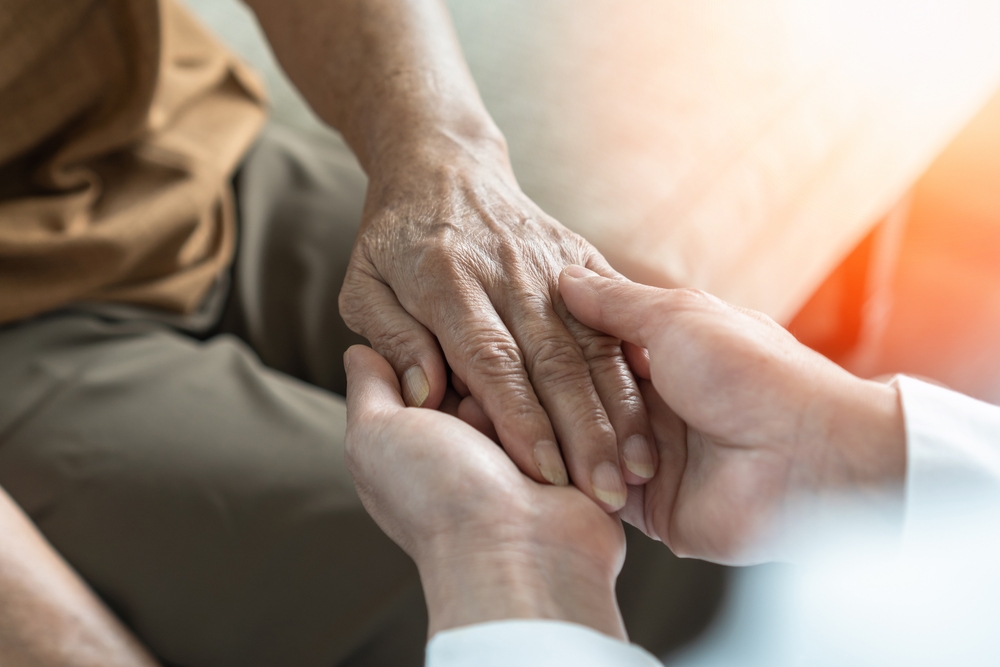For most people, death is depressing and terrifying. This is often because there is so much unknown about death. But one hospice/palliative care nurse finds the job inspiring.
She believes that educating people about what happens before death can help make the process easier and more meaningful for the individuals and their loved ones. But there are a few end-of-life phenomena that occur that even she cannot fully explain. One is called “visioning”.

What is Visioning?
The term is also known as End-of-Life Dreams and Visions (ELDVs). It refers to when hospice patients report visions, while awake or sleeping, of people who are not there.
Since delirium often comes with the dying process, these reports are easily overlooked by professionals and loved ones looking after the patients. However, paying attention to ELDVs can help support and reassure the patients and help their loved ones connect with them in their final moments.

Types of Visions
This deathbed phenomena often involves visions of religious figures or deceased friends, relatives, or even pets. These visions are peaceful and comforting. Sometimes it is an unfamiliar person with a soothing presence. The visions may also involve meaningful settings or memories. ELDVs tend to indicate the patient has only a few weeks left to live.
Visioning or Hallucinating?
Delirium and visioning may sound similar but they are very different. Hallucinations from delirium tend to be stressful and disorienting, and accompanied by a lack of awareness and focus.
Meanwhile, visioning is a comforting experience that can come alongside full awareness and lucidity. However, many patients won’t report ELDVs in fear of ridicule or embarrassment.

An End-Of-Life Nurse
Julie McFadden, BSN, RN, cultivated a following on TikTok where she demystifies death by talking about her work. “People often ask, ‘Isn’t it so depressing?’ It’s sad sometimes, yes. There’s really no way around that,” she wrote on Time.
“But I don’t find my job to be depressing. In a way, it’s actually a sacred gift to me. The people I’ve met in their dying moments have changed my outlook on life, and far from depressing, I find their stories precious and inspiring.
“I See it All the Time”
McFadden explains that visioning occurs a “few weeks to a month before death, not right before death,” in a TikTok. Although scientists don’t fully understand why it occurs, she clarifies it is not a result of delirium, ICU psychosis, lack of oxygen to the brain, or medication. “It’s very specific. Always comforting.”
She concludes: “As an ICU nurse I wouldn’t have believed it either but now that I’ve been a hospice nurse for eight years, I believe it, because I see it all the time.”

“I Ask Specific Questions”
McFadden believes she may hear more stories about visioning compared to other nurses because of how much time she spends with the families and because of the specific questions she asks.
As she explains in a TikTok, “I don’t say ‘are they seeing dead relatives.’ I just say ‘is there anything else that’s concerning you’ after a full visit…” This question often prompts the family or patient to report the ELDVs.
“She Came and Told Me”
She tells one visioning experience she had witnessed involving a couple who had been married for about 70 years. The husband was in hospice when the wife’s sister passed away. The sister was very close to the couple so the wife was afraid of upsetting her husband. After about a week, she finally told him and he said he already knew because the sister was dead because “she came and told me.”
“That might sound crazy to you but that kind of stuff isn’t that crazy because it happens enough,” the nurse explained. “Especially if you take the time to talk to people, they will tell you things like this…” The husband, being a Christian, had also had ELDVs of Jesus that comforted him.

Awareness of End-Of-Life Visions
About 50% to 60% of hospice patients report these end-of-life visions, according to a 2009 report from the American Journal of Hospice and Palliative Medicine. Therefore, authors of an 2023 analysis in the same journal call for better training for hospice profesionals and caregivers to identify and normalize ELDVs.
Listening to Visioning
Since these visions are psychologically important, they can “provide a source for clinical insight” and carers should “avoid dismissing them as alterations of cognition (eg. delirium),” says the authors. Additionally, interpreting and sharing these visions can create “additional strategies for supporting, reassuring and strengthening the relationship with their loved ones.” Once the fear of judgement is gone, patients may share knowledge that caregivers can use to improve the dying process.

